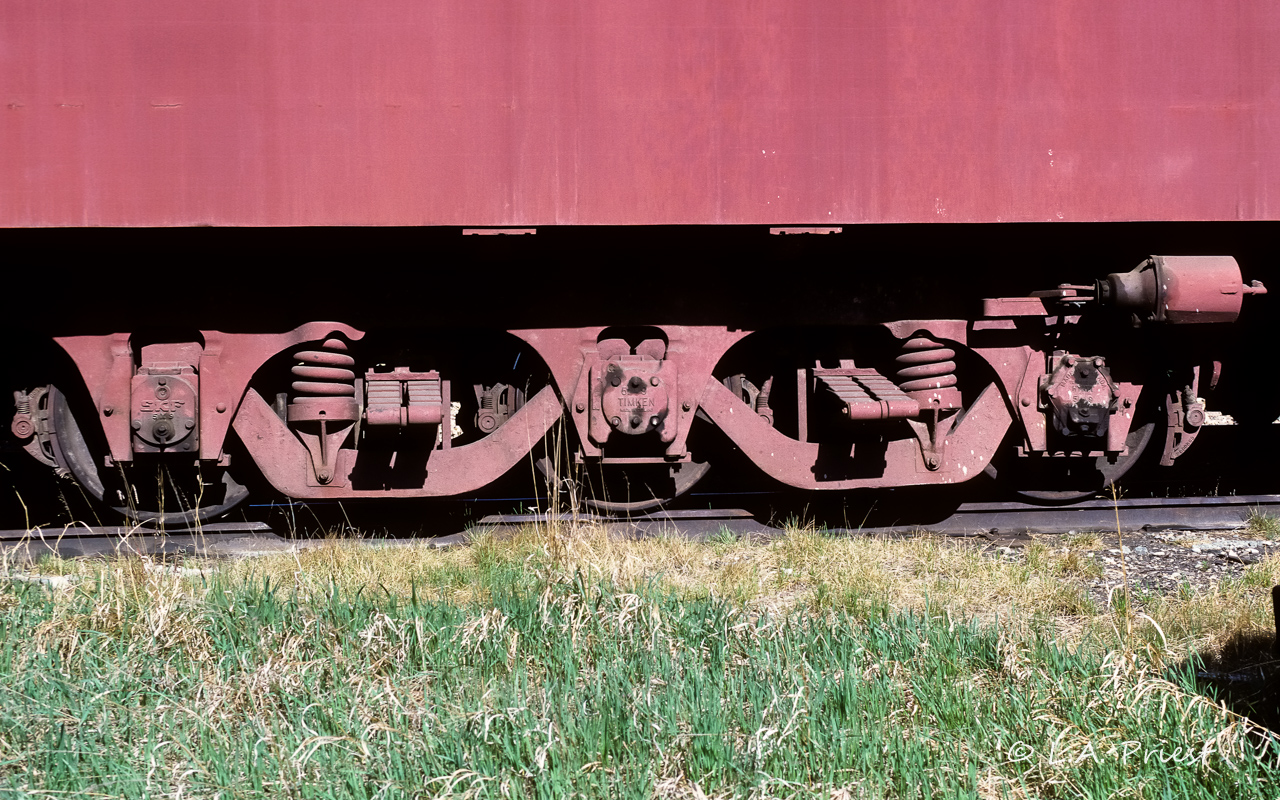|
Caption: Possibly, this photo will give some light to Jacob's comment on truck bearings. This a converted baggage car in work train service, parked in the Redwater siding. You can see the equipment gets a lot of love. Every bearing is different. SKF on the left, Timken in the middle and Hyatt on the right. Also, when I zoom in on the original photo, the Timken is made in England and the Hyatt in Canada. A couple of weeks later, converted baggage car 70781 was parked in the siding. It had 2 Hyatt's left and centre, with a freight roller bearing on the right. Sure looked like a freight bearing with the rounded corner triangle and 3 bolts within (instead of the covers with names as seen in the photo above). Seems with these older cars, if it fits, put it on and she's good to go. :-)
|



Very informative. Thanks!!
Your welcome Mr. Mooney, I find these little things about how the railways improvised to cut costs quite interesting myself. Some are real eye openers.
I will point out the 60lb rail the truck is sitting on, not much web on track this light.
Interesting, thanks for the info. These are all variations of friction bearing then? So used to seeing the box with flip up lid on the ends of the axle.
Ooops, reading my caption again, not the clearest of statements. All of these are roller bearing, including those on the 70781. My guess is that these baggage cars, back when they were in active passenger service, rode on rollers too (59119 BLT 1951, 70781 BLT 1953). Arnold’s rules instruction car is an older car than these (BLT 1911), thus the friction bearings. As they are all non-revenue, my thoughts are, they mixed and matched whatever was available from the parts pile to keep them on the road. Also, chances are, if the front of the bearing has a bolt pattern (like those above) they are roller bearing. Lids are friction. A rough guide. Thanks Jacob.
Thanks Jacob.